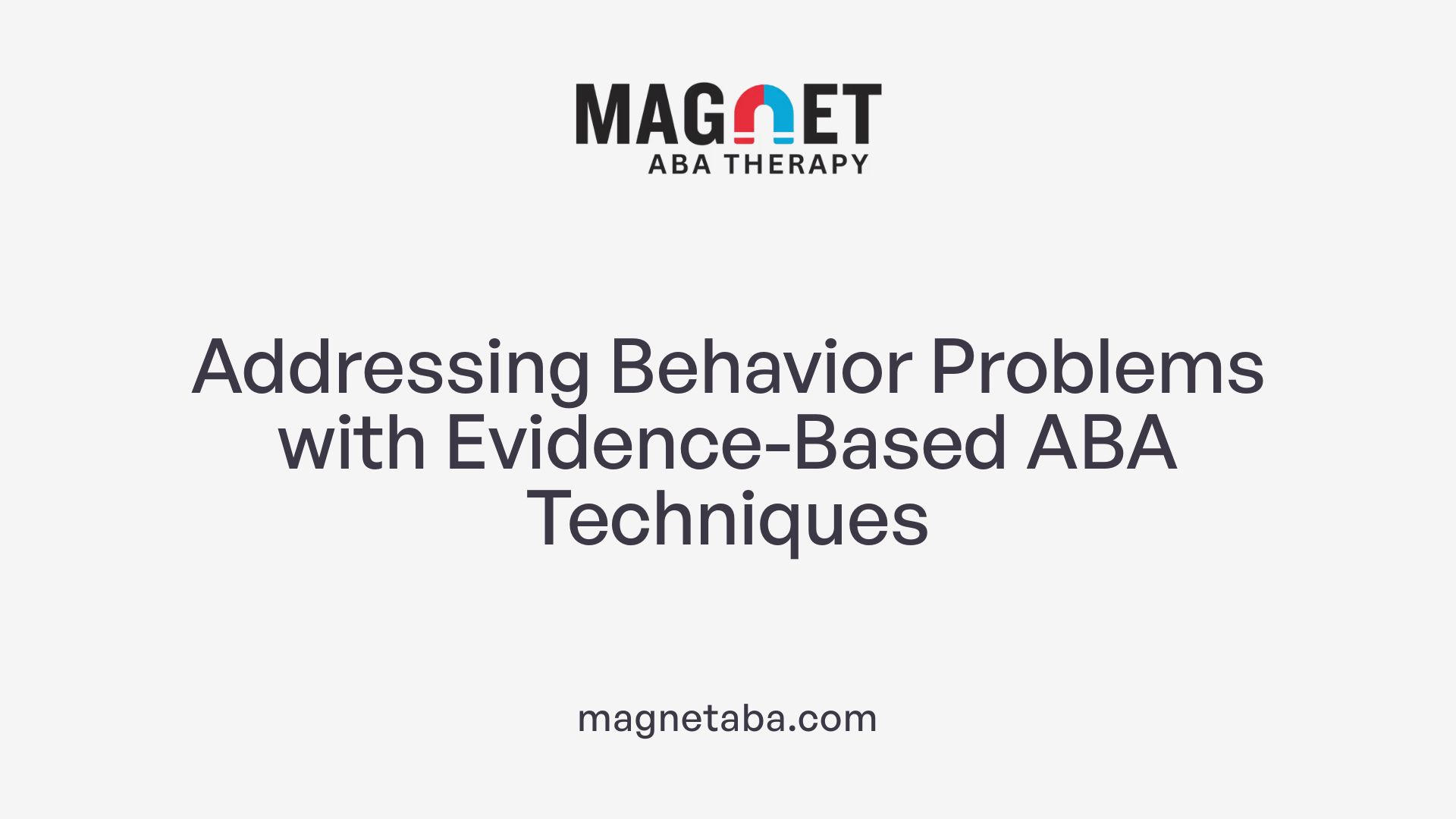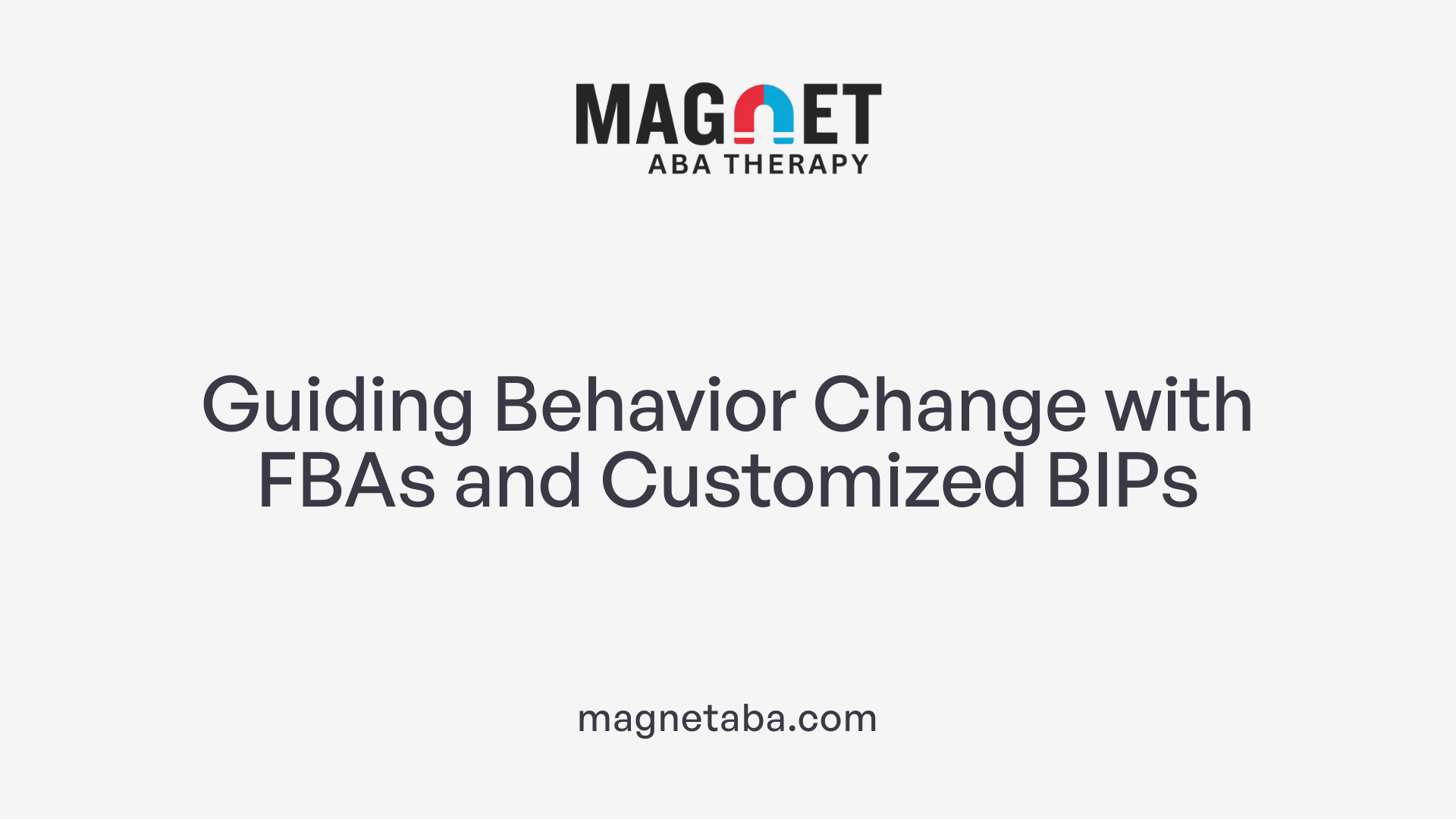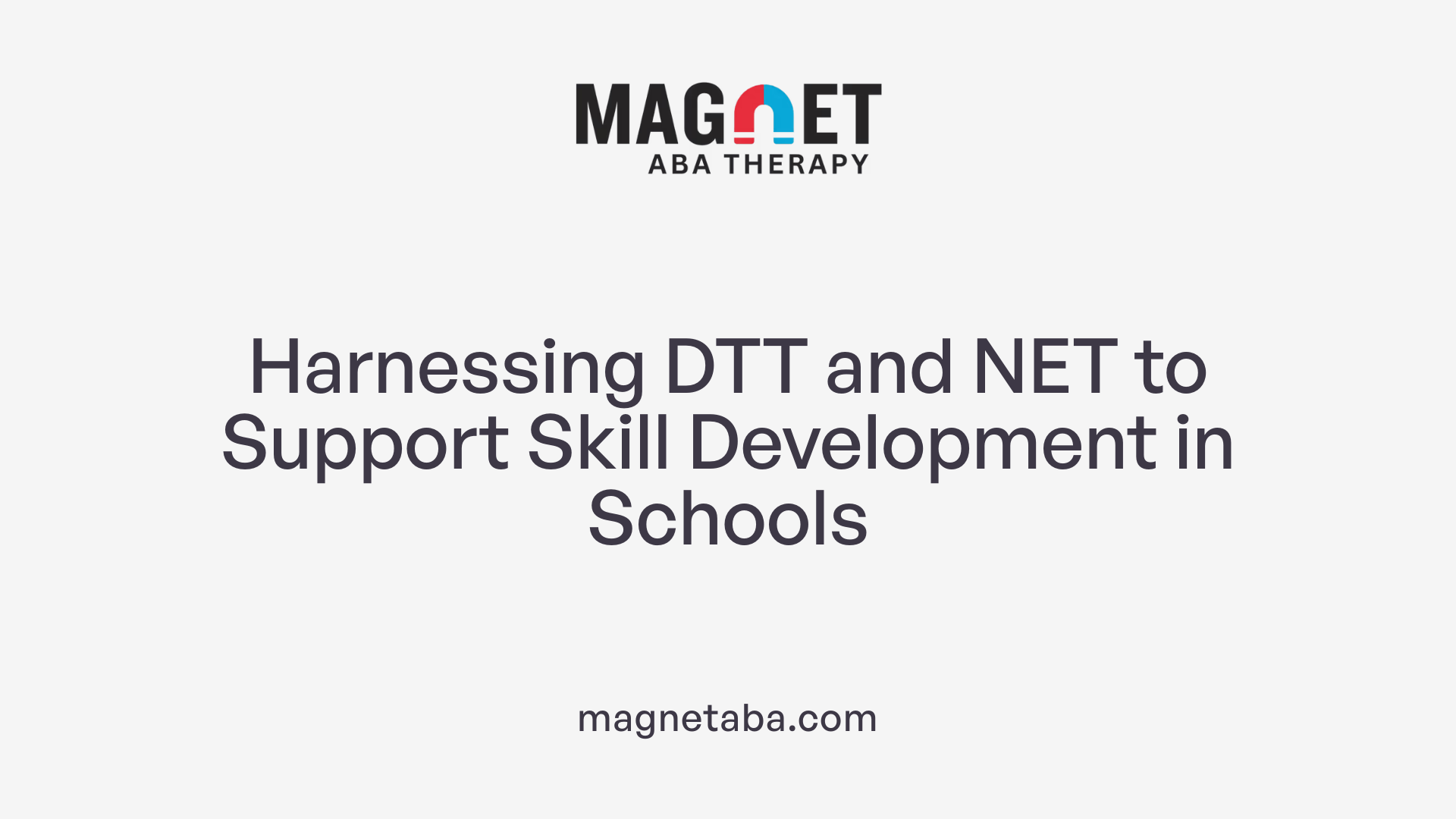Introduction to ABA in Educational Settings
Applied Behavior Analysis (ABA) is a systematic, evidence-based approach that has been employed since the 1960s to understand and modify behavior. Its application within school environments has proven effective in promoting positive behaviors and reducing disruptive or harmful actions, particularly for children with autism and other developmental challenges. The integration of ABA into classroom practices involves tailored strategies, collaborative planning, and data-driven decision-making, all aimed at fostering a supportive and productive learning environment.
Fundamentals of ABA and Its Application in Schools
What is the science behind ABA?
Applied Behavior Analysis (ABA) is rooted in the science of learning and behavior, with its origins dating back to the 1960s. It involves understanding how behaviors are learned and maintained through environmental factors. By analyzing what happens before and after a behavior—known as the A-B-C model—therapists can identify why a behavior occurs and how to influence it.
How does ABA help increase helpful behaviors and decrease harmful ones?
ABA aims to promote positive behaviors that support learning and independence while reducing disruptive or harmful behaviors. This is achieved through strategies like positive reinforcement, where rewarding a desired behavior makes it more likely to happen again. By focusing on skill-building and behavior modification, ABA helps children develop essential social, communication, and daily living skills.
How does ABA relate to classroom practices addressing behavior?
In school settings, ABA provides evidence-based techniques that teachers and therapists use to foster an effective learning environment. This includes systems like token economies and contingency management to reinforce behaviors. Teachers often employ discrete trial teaching, which breaks skills into manageable parts with immediate feedback, and naturalistic teaching, which integrates learning into everyday activities high in relevance.
Functional Behavior Assessments (FBAs) are crucial in understanding why challenging behaviors occur by examining antecedents and consequences. With this insight, educators can develop personalized Behavior Intervention Plans (BIPs) that reinforce positive actions, teach alternatives, and prevent problematic behaviors.
Collaboration between teachers, behavior analysts, and families is essential for consistent implementation of strategies. This teamwork ensures that interventions are tailored to individual needs and are effectively integrated into the classroom environment.
ABA’s focus on behavior motivation and environmental modifications helps create structured, supportive learning settings. These environments facilitate not only academic growth but also social and communication development, leading to better student engagement and long-term success.
Core Strategies and Techniques of ABA in Schools

How can ABA be used in schools?
Applied Behavior Analysis (ABA) plays a significant role in supporting students with autism and other developmental challenges within educational settings. Schools utilize a tiered approach to ABA, involving universal strategies for all students (Tier 1), targeted interventions for students needing additional support (Tier 2), and intensive, customized plans for students with more complex needs (Tier 3).
In classroom settings, ABA techniques such as positive reinforcement, prompting, and modeling encourage desirable behaviors and improve focus and social skills. These interventions are often guided by thorough functional assessments and personalized Behavior Intervention Plans (BIPs).
A crucial part of implementing ABA in schools is the use of goal-oriented strategies like Discrete Trial Training (DTT) and Natural Environment Teaching (NET). These methods facilitate skill acquisition in structured and natural settings, respectively.
Professional development is essential for effective ABA integration, involving training and certification such as BCBA (Board Certified Behavior Analyst) qualification. Ongoing coaching ensures practitioners apply best practices ethically and effectively.
The outcome of applying ABA strategies in schools is to help students with autism access the mainstream curriculum, build essential life skills, and actively participate in school and community activities.
Positive reinforcement
Positive reinforcement involves rewarding specific behaviors to increase their likelihood. In schools, this might include praise, tokens, or extra playtime, which motivate students to adopt positive behaviors such as following rules or completing tasks.
Functional assessment tools
Tools like Functional Behavior Assessments (FBAs) analyze the antecedents and consequences of behaviors. They help identify why a behavior occurs and guide the creation of tailored intervention strategies.
Behavior intervention plans (BIPs)
Based on FBA data, BIPs are developed to encourage positive behaviors and discourage problematic ones. These plans outline specific strategies, targets, and reinforcement systems for individual students.
Discrete Trial Training (DTT)
DTT is a structured teaching method where skills are broken into small components. It involves clear instructions, prompts, responses, and immediate feedback, making it effective for teaching new skills and reducing behaviors linked to skill deficits.
Natural Environment Teaching (NET)
NET promotes learning during everyday activities in real-world settings. This approach enhances skill generalization and encourages spontaneous learning, making it practical for promoting independence and social interaction.
| Technique | Focus Area | Description |
|---|---|---|
| Positive Reinforcement | Behavior Increase | Rewards to reinforce desired behaviors |
| Functional Behavior Assessment (FBA) | Behavior Understanding | Analyzes antecedents and consequences of behaviors |
| Behavior Intervention Plans (BIPs) | Behavior Modification | Customized strategies based on FBA findings |
| Discrete Trial Training (DTT) | Skill Teaching | Structured repetition of skills with prompts |
| Natural Environment Teaching (NET) | Skill Generalization | Learning through natural activities in real-life settings |
By utilizing these tools and strategies, schools can effectively support their students' behavioral and developmental needs, helping them to thrive academically, socially, and emotionally.
Addressing Behavior Problems via ABA

Does ABA help with behavior problems?
Yes, applied behavior analysis (ABA) is highly effective in addressing behavioral issues, especially among children with autism and other developmental needs. ABA aims to increase beneficial behaviors such as social interaction, communication skills, and independence, while reducing disruptive or harmful behaviors like aggression or self-injury.
A wealth of scientific research shows that ABA can produce meaningful improvements in behavior when interventions are started early and delivered consistently over time. Therapists utilize evidence-based techniques, including positive reinforcement, prompting, and functional communication training, each tailored to meet individual needs. This structured, data-driven approach not only helps in managing problematic behaviors but also facilitates overall developmental progress.
By understanding and modifying the functions of behaviors through careful assessment and targeted strategies, ABA offers a comprehensive framework for behavioral change. It is a proven method that can significantly enhance quality of life for individuals and their families.
How is behavior understood and modified in ABA?
ABA involves understanding the antecedents (what happens before a behavior), the behavior itself, and the consequences that follow—collectively known as the A-B-C framework. Therapists analyze these elements to identify why certain behaviors occur and what triggers or reinforces them.
Once the function of a behavior is identified, therapists develop personalized intervention strategies. These strategies often include positive reinforcement—rewarding desired behaviors to increase their occurrence—and prompting techniques to guide behavior in the right direction.
In school settings, Functional Behavior Assessments (FBAs) are conducted to pinpoint the reasons behind challenging behaviors. Results from FBAs inform Behavior Intervention Plans (BIPs), which outline specific, tailored strategies to reinforce positive behaviors, teach alternative skills, and prevent problem behaviors.
The role of data collection and assessment
Continuous monitoring through data collection is a core element of ABA. Therapists track progress, observe responses to interventions, and make data-driven adjustments to ensure goals are met effectively.
Assessment methods include direct observation, recording frequency of behaviors, and analyzing patterns over time. This ongoing assessment helps in refining strategies, ensuring interventions remain effective and aligned with the individual's evolving needs.
Application in educational settings
In schools, ABA techniques like Discrete Trial Training (DTT) and Natural Environment Teaching (NET) are used to promote skill acquisition and manage behavior. DTT involves breaking down skills into small, manageable steps with structured prompts, while NET integrates learning into natural settings like recess or lunch.
Team collaboration among therapists, teachers, and parents is vital. This teamwork ensures that strategies are consistently applied across different environments, aiding generalization of skills and reducing problematic behaviors.
| Aspect | Description | Additional Details |
|---|---|---|
| Techniques Used | Positive reinforcement, prompting, DTT, NET | Evidence-based techniques for skill development and behavior management |
| Assessment Tools | FBA, data collection, ongoing evaluation | Used to determine behavior functions and track progress |
| Settings | Home, school, community | Adapted to individual needs and environments |
| Goals | Reduce disruptive behaviors, increase social skills, independence | Focused on functional and social improvements |
ABA's structured, individualized approach makes it a practical method to help individuals develop essential skills, leading to better social integration and reduced behavioral challenges.
Implementation of Functional Behavior Assessment and Behavior Plans

How does ABA relate to classroom practices addressing behavior?
ABA, or Applied Behavior Analysis, plays a crucial role in shaping classroom behavior management. It provides educators and therapists with practical, evidence-based strategies that promote positive behavior and minimize disruptive ones.
One of the foundational tools in ABA is the Functional Behavior Assessment (FBA). An FBA helps identify the reasons behind a child's challenging behaviors by analyzing the behaviors' antecedents and consequences. This understanding enables the development of personalized strategies to address specific needs.
Based on the insights from FBAs, Behavior Intervention Plans (BIPs) are created. These plans outline targeted interventions aimed at reinforcing desirable behaviors and teaching alternatives for problematic ones. For instance, a BIP might include visual supports, positive reinforcement techniques, or prompting strategies tailored to the child's unique functions of behavior.
In practice, ABA techniques such as discrete trial training (DTT), natural environment teaching (NET), and contingency management are employed to systematically teach new skills and modify behaviors. Teachers often integrate token economies, where students earn rewards for exhibiting positive behaviors, fostering motivation and consistency.
Collaboration among teachers, behavior analysts, parents, and other school staff is vital to ensure that interventions are applied consistently across settings. Regular data collection and ongoing assessment allow for adjustments to be made, ensuring that strategies remain effective as needs evolve.
Overall, ABA's integration into classroom settings creates a structured, supportive environment. It enhances a child's ability to acquire new skills, improves social interactions, and reduces problematic behaviors, facilitating better participation in learning and social activities.
Techniques: DTT and NET in Practice

What are some examples of ABA techniques like discrete trial training (DTT) and natural environment teaching (NET)?
Applied Behavior Analysis (ABA) incorporates various methods to support skill development and behavior change. Two widely used techniques are Discrete Trial Training (DTT) and Natural Environment Teaching (NET).
DTT is a structured teaching approach that involves breaking down skills into small, manageable steps. It uses clear instructions, prompts, and immediate feedback to reinforce learning. This method is particularly effective for teaching specific skills like communication or motor actions, as it creates a predictable environment for the child. Each trial provides an opportunity for reinforcement, which helps solidify the behavior.
On the other hand, NET emphasizes teaching during real-life activities and routines. It fosters spontaneous learning by incorporating skill development into everyday situations such as play, meals, or recess. This makes skills more relevant and easier to generalize across different settings. Both DTT and NET rely on reinforcement techniques to motivate children and encourage progress.
How do these techniques promote spontaneous learning?
While DTT offers focused, structured instruction ideal for initial skill acquisition, NET supports the generalization of these skills in natural contexts. It encourages children to use their skills spontaneously during daily interactions, which leads to more functional and adaptable behaviors.
For example, a child might learn to request an item during a DTT session and then be encouraged to ask for something during a snack or playtime at school. This transfer of skills from structured to natural environments reflects true learning and supports social and communication development.
How do DTT and NET address skill deficits?
Both approaches are tailored to meet individual needs by targeting specific skill gaps identified through assessments. DTT helps teach foundational skills like following instructions, while NET aims to strengthen functional communication and social interactions in everyday settings.
By combining these methods, therapists can support children in acquiring essential skills, increasing independence, and reducing challenging behaviors rooted in frustration or communication difficulties. This comprehensive strategy ensures a well-rounded development tailored to each child's unique profile.
Comparing ABA with Other Behavioral Programs
How does ABA therapy differ from other school-based behavioral programs?
ABA, or Applied Behavior Analysis, stands out when compared to other behavioral programs in schools due to its scientific origins and structured approach. While some programs may use general behavior charts or social skills groups, ABA utilizes a systematic process rooted in decades of research. It involves detailed assessments such as Functional Behavior Assessments (FBAs) to understand why behaviors occur and then creates highly individualized plans based on these insights.
In practice, ABA incorporates techniques like positive reinforcement and Natural Environment Teaching (NET) to promote skill development across communication, social, and daily living domains. These strategies are consistently monitored through data collection, allowing for precise adjustments and validation of progress.
Many alternative programs might focus on incidental learning or broad social curricula without emphasizing rigorous data analysis or tailored interventions. Consequently, although these methods can be helpful, they usually lack the scientific backing and measurable outcomes that define ABA.
The evidence supporting ABA's effectiveness is substantial. Research shows that children who undergo ABA tend to demonstrate significant improvements in language, social interactions, and reduced problematic behaviors. This data-driven, goal-focused approach makes ABA a preferred choice for supporting children with autism and other developmental needs within school settings.
How is the evidence supporting ABA compared to other programs?
The effectiveness of ABA is backed by decades of scientific studies, and it holds endorsements from major health organizations, including the US Surgeon General and the American Psychological Association. Its rigorous methodology and demonstrated outcomes set it apart from less structured interventions, making it a gold standard in behavioral intervention for autism spectrum disorder.
In summary, ABA distinguishes itself from other school-based behavioral programs through its scientific framework, systematic assessment, individualized plans, and proven results in improving learning and social behaviors.
Promoting Generalization and Long-Term Success

How does ABA therapy support skill generalization in natural settings?
ABA therapy is designed to transfer skills learned during structured sessions into everyday environments such as classrooms, playgrounds, and lunchrooms. Techniques like Natural Environment Teaching (NET) are used to facilitate spontaneous learning during real-life activities. This approach helps children apply communication, social, and self-regulation skills across various situations, boosting their independence and confidence.
How important is collaboration with school staff and families?
Successful ABA interventions rely heavily on teamwork. Therapists, teachers, and families work together to ensure consistency and reinforce learned behaviors in different settings. Teachers incorporate ABA strategies like visual supports and positive reinforcement into daily routines. Family involvement ensures that skills are practiced at home and school, creating a cohesive support system that encourages continual growth.
Why is ongoing monitoring and adjustment necessary?
ABA programs are data-driven, meaning progress is regularly tracked through assessments and data collection. This allows therapists to identify what works best and where adjustments are needed. Continuous monitoring helps tailor interventions to meet each child's evolving needs, fostering sustained improvements over time.
| Aspect | Approach | Purpose | Examples |
|---|---|---|---|
| Skill Generalization | Use of natural settings and activities | To help children apply skills broadly | Recess routines, lunchtime activities |
| Collaboration | Teamwork among therapists, teachers, and families | To ensure consistency and reinforce learning | Regular meetings, shared plans |
| Monitoring & Adjustments | Data collection and ongoing assessments | To refine interventions for better outcomes | Progress charts, behavioral observations |
These practices are proven effective. ABA techniques such as reinforcement, prompting, and environmental modifications significantly improve behaviors and learning outcomes. The focus on generalization, teamwork, and adaptable strategies enables children to achieve long-term success, with better communication, social skills, and independence.
Conclusion: The Impact of ABA in Educational Settings
What are the benefits of ABA in schools?
ABA therapy supports children with autism by teaching essential skills such as communication, social interaction, and daily habits. It helps reduce disruptive or harmful behaviors, making classroom environments more positive and productive. With individualized programs overseen by qualified behavior analysts, children can gain independence and confidence, improving their overall school experience.
Why is collaboration and data important in ABA planning?
Successful ABA implementation requires teamwork among teachers, therapists, parents, and school staff. These collaborators gather data during sessions to monitor progress continually. This ongoing assessment enables tailored adjustments, ensuring interventions remain effective and aligned with each child's evolving needs.
What are future considerations for ABA in educational settings?
The future of ABA in schools involves enhancing naturalistic teaching methods like Pivotal Response Teaching and natural environment teaching, which promote real-world skills. Integrating ABA strategies into daily routines, including recess and lunch, helps children generalize learned behaviors across settings. Continued research and training will further improve how schools support diverse learners using evidence-based practices.
| Aspect | Description | Additional Notes |
|---|---|---|
| Behavioral Focus | Reduce harmful behaviors & promote positive ones | Addresses cause and context of behaviors through FBAs |
| Techniques Used | DTT, NET, PRT, visual supports | Tailored to individual needs and environment |
| Observation & Adjustment | Data collection & ongoing assessment | Ensures programs adapt to progress |
| Settings | Home, school, community | Flexible for various environments |
| Collaboration | Teachers, parents, behavior analysts | Ensures consistency and effectiveness |
Final Thoughts on ABA’s Role in Schools
The integration of ABA into school settings provides a robust framework for understanding and addressing problematic behaviors through personalized, scientifically-supported strategies. By systematically analyzing behavior functions, implementing tailored interventions, and fostering collaboration among all stakeholders, ABA can significantly enhance learning outcomes and social development for children with autism and other developmental challenges. As research continues to evolve, the ongoing implementation and refinement of ABA strategies promise to foster more inclusive, supportive educational environments that cater effectively to the diverse needs of students.
References
- Applied Behavior Analysis (ABA) | Autism Speaks
- School-Based ABA Therapy - Surpass Behavioral Health
- Effective School-Based ABA Techniques for Every Child
- ABA Therapy vs School: What's Best for Your Child?
- Applied Behavior Analysis (ABA) in Schools: Supporting Students ...
- START Project - Grand Valley State University
- Connecting Archives - START Project - Grand Valley State University
- How to Use ABA in the Classroom
- Is ABA Therapy Only for Autism? - Applied Behavior Analysis Degrees











